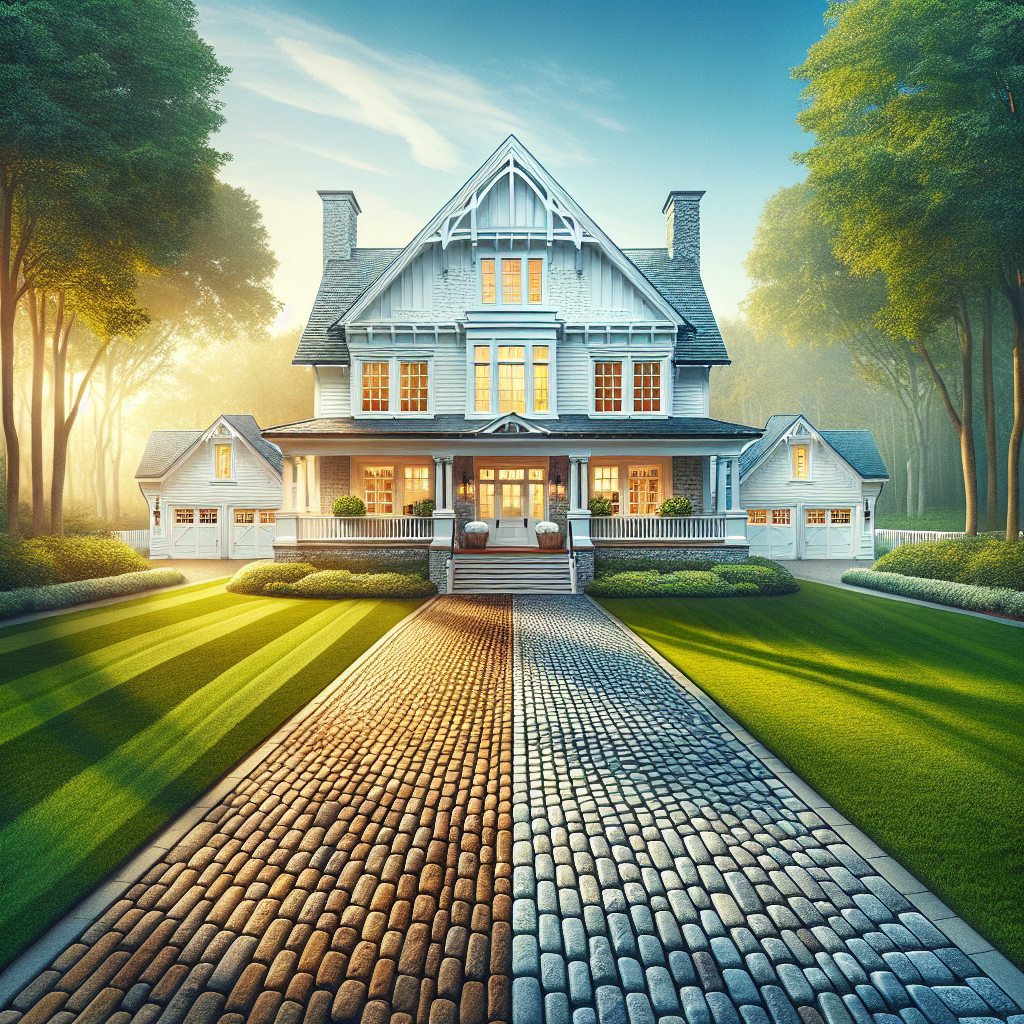When considering your home’s exterior, many homeowners focus on the paint, landscaping, or roof, overlooking one important component: the driveway. A well-designed driveway not only serves a functional purpose but can also enhance your home’s curb appeal. Selecting the right driveway material to complement your home’s architecture is crucial for achieving that perfect harmony between style and function. In this comprehensive guide, we’ll explore various driveway materials and how to choose the right one for your home.
Why Driveway Material Matters
Curb Appeal and First Impressions
Your driveway is one of the first elements visitors encounter when they approach your home. An attractive, well-maintained driveway can make a lasting impression and significantly enhance your home’s overall appeal. Furthermore, the right material can set the tone for your home’s architectural style, whether it’s modern, rustic, traditional, or contemporary.
Functionality and Durability
While aesthetics are essential, functionality should never take a backseat. Driveways must withstand heavy vehicles, weather conditions, and daily wear and tear. Choosing a material that can endure these challenges while still matching your home’s architectural style ensures both beauty and longevity.
Common Driveway Materials and Their Compatibility
1. Concrete: The Versatile Choice
Concrete is one of the most popular driveway materials due to its durability and versatility. It can be textured or colored to enhance aesthetic appeal, making it suitable for various architectural styles.
- Modern Homes: Sleek, polished concrete can create a sophisticated look, perfect for contemporary designs.
- Traditional Homes: Stamped concrete offers the charm of brick or stone, complementing classic architecture.
2. Asphalt: The Cost-Effective Solution
Asphalt driveways are budget-friendly and quick to install, making them a practical choice for many homeowners.
- Bungalows and Ranch-Style Homes: The dark color of asphalt pairs well with these styles, adding depth without overpowering the aesthetic.
- Urban Settings: Asphalt’s clean lines and uniform surface fit well within dense city environments, aligning with modern architecture.
3. Pavers: The Elegant Touch
Pavers provide a high-end look that can elevate your home’s exterior. They come in various shapes, sizes, and colors, allowing for endless customization.
- Mediterranean and Colonial Homes: The intricate patterns available in pavers can enhance the elegance of these architectural styles.
- Landscape Integration: Pavers allow for the blending of driveways with surrounding gardens, creating a cohesive outdoor space.
4. Gravel: The Rustic Charm
For those seeking a more rustic, natural aesthetic, gravel is an excellent choice. It’s affordable and can be arranged in various patterns.
- Cottage and Farmhouses: Gravel pathways lead charmingly to rustic homes, enhancing the countryside vibe.
- Eclectic Styles: The casual nature of gravel suits homes that embrace diverse architectural elements, allowing for flexibility in design.
5. Stone: The Luxurious Option
Natural stone driveways exude elegance and luxury. They can be more expensive but are also extremely durable and visually appealing.
- Historic Homes: Stone complements traditional and historical architecture beautifully, seamlessly blending into the historic landscape.
- High-End Properties: The investment in stone can significantly increase property value, making it attractive for upscale neighborhoods.
Tips for Matching Your Driveway Material to Your Home’s Architecture
Consider Architectural Features
Look for key architectural features like rooflines, colors, and materials used in your home. For example, a home with wooden accents may pair beautifully with a gravel driveway, while a brick façade might call for pavers or stamped concrete.
Think About Surroundings
Evaluate the landscape and neighborhood. If the area has a defined style, such as urban modern or rural rustic, consider choosing a material that aligns with that aesthetic to maintain consistency in design.
Play with Patterns and Textures
Even within the same material, you can vary patterns and textures to suit your home’s style. For instance, a concrete driveway can be poured in sleek slabs for a modern look or stamped with designs to resemble cobblestones for a more traditional feel.
Conclusion: Make Your Driveway a Reflection of Your Style
Your driveway should be more than just a practical pathway; it should be a vital component of your home’s overall aesthetic. By carefully selecting the right material that complements your home’s architecture, you can create a beautiful and functional entrance that enhances your property’s curb appeal. Remember, the ultimate goal is to achieve an attractive and cohesive look that reflects your style while also standing the test of time.
Investing the time to thoughtfully choose your driveway material is a decision that can significantly enhance your home’s charm and utility. With the right balance of style and function, your driveway can truly become an inviting introduction to your beautiful home.


